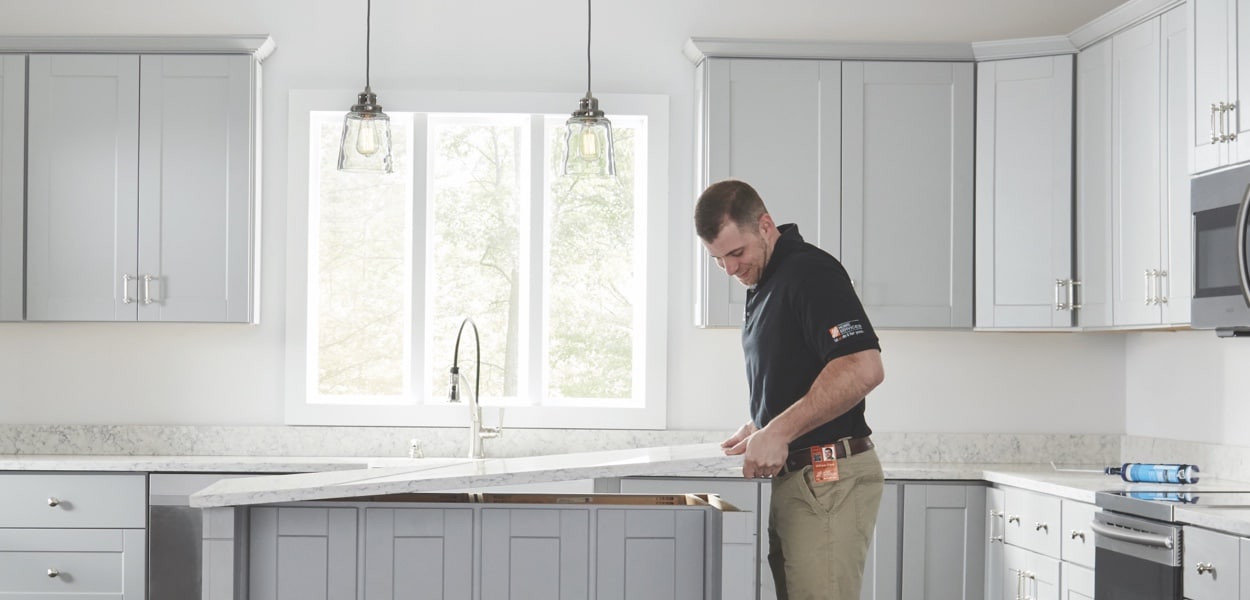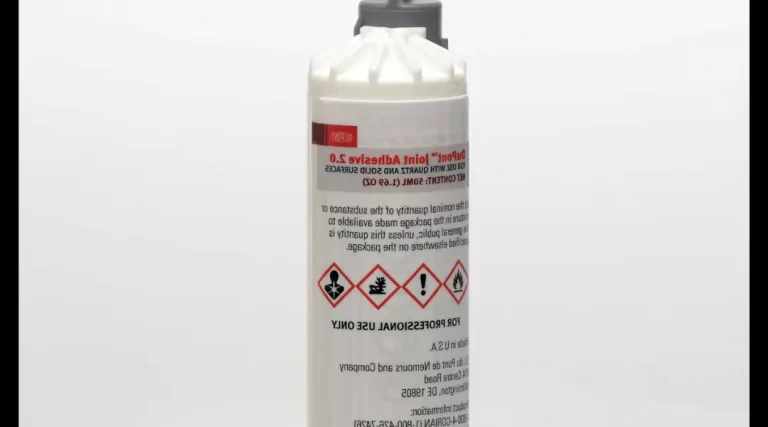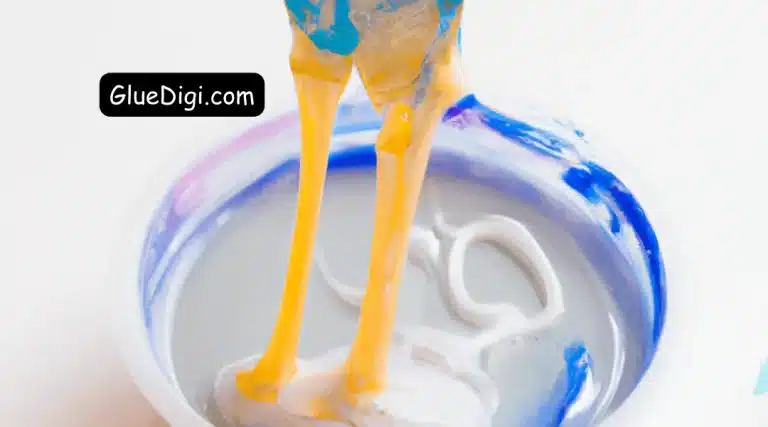Marble adhesive, also known as stone adhesive or marble glue, is a versatile and essential bonding material used in various construction and decorative projects. It plays a crucial role in seamlessly joining marble pieces, ensuring durability and aesthetic appeal.
Let’s dive into this peculiar topic and uncover the taste, health risks, and even unique uses of glue beyond its intended purpose.
From enhancing the look of luxurious marble flooring to repairing chipped artifacts, marble adhesive has become indispensable in the world of architecture and interior design.
What is Marble Adhesive
Marble adhesive, also known as stone adhesive or marble glue, is a specialized bonding material used in various construction and interior design projects. It is specifically designed to join marble pieces together, creating a seamless and durable bond. This adhesive is essential in enhancing the aesthetics and structural integrity of marble surfaces, making it a crucial component in modern architecture and design.
With different types available, each offering unique properties and applications, marble adhesive provides a versatile solution for bonding marble to various surfaces. Whether for installing marble flooring, bonding countertops, repairing artifacts, or assembling furniture, proves its significance in delivering lasting and visually appealing results.
Types of Marble Adhesive
Cement-Based Adhesive
Cement-based, as the name suggests, is made of cement and other additives to enhance its properties. It is commonly used for indoor applications and is suitable for bonding marble to concrete or cementitious surfaces. While it offers excellent adhesion and is cost-effective, it may not be suitable for areas exposed to excessive moisture.
Composition and Features of Cement-Based Adhesive
Cement-based marble adhesive typically consists of Portland cement, fine sand, and additives like polymers or resins. These additives improve the adhesive’s strength, flexibility, and water resistance. The adhesive is available in powder form, which is mixed with water before application.
Epoxy Resin Adhesive
Epoxy resin is highly durable and exhibits exceptional bonding strength. It is ideal for bonding marble to various surfaces, including wood, metal, and even other stones. The two-component formula ensures a strong, long-lasting bond, making it a popular choice for high-end applications.
Advantages and Limitations of Epoxy Resin Adhesive
Epoxy resin is renowned for its unmatched bonding capabilities, providing exceptional strength even in demanding environments. It is resistant to water, chemicals, and temperature fluctuations, making it suitable for various applications, including kitchens and bathrooms. However, its longer curing time and higher cost are some considerations to keep in mind.
Polyurethane Adhesive
Polyurethane adhesive is known for its flexibility and resistance to temperature changes, making it suitable for both indoor and outdoor applications. It provides good bonding on different surfaces and is often used for large marble slabs.
Applications and Strengths of Polyurethane Adhesive
Polyurethane adhesive is known for its flexibility, which allows it to withstand movements in the bonded materials. It is commonly used in outdoor projects, such as cladding and facades, where temperature changes can cause expansion and contraction. Its water and weather resistance make it suitable for external applications.
Acrylic Adhesive
Acrylic marble adhesive is ready-to-use and offers quick bonding for smaller projects. It is suitable for both indoor and outdoor use and provides a strong bond, especially for light-colored marbles.
Properties and Suitability of Acrylic Adhesive
Acrylic marble adhesive offers fast bonding and is best suited for smaller projects or quick repairs. It is user-friendly and does not require mixing, making it a convenient option. However, it may not have the same strength as epoxy resin or polyurethane adhesives, so it’s essential to assess the project’s requirements before choosing this type.
Ready-to-Use Paste Adhesive
Ready-to-use paste comes in pre-mixed containers, offering convenience and ease of application. It is ideal for DIY projects or small repairs but may not be suitable for heavy-duty applications.
Convenience and Uses of Ready-to-Use Paste Adhesive
The ready-to-use paste is ideal for small repairs or DIY projects, where efficiency and ease of application are essential. It eliminates the need for measuring and mixing, saving time and effort. However, its bonding strength may not be as robust as other types, so it’s best suited for lightweight applications.
Uses of Marble Adhesive
Marble adhesive finds applications in various construction and interior design projects, thanks to its impressive bonding capabilities and aesthetic appeal.
Installing Marble Flooring and Wall Cladding
When installing marble flooring or wall cladding, marble adhesive ensures a seamless and durable bond between each marble tile or slab. This adhesive not only provides structural support but also enhances the overall aesthetics of the marble surface.
Bonding Marble Countertops
Marble countertops add elegance and sophistication to kitchens and bathrooms. Marble adhesive ensures a secure bond between the marble slab and the supporting structure, providing a long-lasting countertop that can withstand daily use.
Repairing Chipped and Broken Marble Pieces
Accidents happen, and marble pieces can get chipped or broken. Marble adhesive comes to the rescue, offering an effective solution to repair damaged marble artifacts or surfaces.
Assembling Marble Furniture and Artifacts
Marble is often used in crafting furniture and decorative artifacts. Marble adhesive is crucial in assembling these pieces, ensuring they stay intact and retain their beauty for years to come.
Advantages of Marble Adhesive
Using marble adhesive offers several benefits, making it the preferred choice for bonding marble in various projects.
Strong and Durable Bonding
It creates a robust bond between marble pieces, ensuring they stay firmly in place. This durability is essential, especially in high-traffic areas or areas subjected to heavy loads.
Resistant to Moisture and Chemicals
Certain types of marble adhesive, such as epoxy resin and polyurethane, are highly resistant to water and chemicals. This makes them suitable for applications in kitchens, bathrooms, and other areas exposed to moisture or harsh substances.
Seamless Aesthetics
It creates a nearly invisible bond between marble pieces, maintaining the surface’s seamless aesthetics. This results in a polished and sophisticated appearance, enhancing the overall beauty of the space.
Versatile Applications in Home and Industry
Marble adhesive’s versatility allows it to be used not only in homes but also in industrial settings. From high-end residential projects to commercial buildings, it finds applications in diverse environments.
Long-lasting Performance
Marble adhesive is designed to provide long-lasting performance, ensuring that the bonded marble remains intact and beautiful for many years. This saves homeowners and businesses from frequent repairs and replacements.
Disadvantages of Marble Adhesive
Despite its many advantages, adhesive options do have some drawbacks that users should be aware of before choosing the right type for their projects
Time-Consuming Application Process
Some types of marble adhesive, such as epoxy resin, require careful mixing and application, which can be time-consuming, especially for large projects.
Limited Time for Adjustment
Once applied, marble adhesive sets relatively quickly, leaving a limited window for adjustments or repositioning of marble pieces. Proper planning and precision during application are essential to avoid mistakes.
Potential for Staining Marble
Certain types of adhesive, especially those with strong pigments, may have the potential to stain the marble surface. It’s crucial to choose the appropriate adhesive to avoid discoloration.
Health Concerns during Application
During the application of marble adhesive, users should take safety precautions, such as using protective gear and ensuring proper ventilation, as some adhesives emit fumes that can be harmful.
Higher Cost Compared to Other Adhesives
In comparison to traditional adhesives, marble adhesive, especially epoxy resin and polyurethane types, can be more expensive. However, considering the long-term benefits, the investment can be worthwhile.
Tips for Using Marble Adhesive
Achieving the best results with marble adhesive requires attention to detail and adherence to specific guidelines.
Surface Preparation for Better Adhesion
Properly preparing the surface before applying marble adhesive is crucial for achieving a strong bond. The surface should be clean, dry, and free from dust and debris.
Proper Mixing and Application Techniques
For adhesives that require mixing, it’s essential to follow the manufacturer’s instructions carefully. Consistent and accurate mixing ensures the adhesive’s optimal performance.
Handling Different Environmental Conditions
Some marble adhesives may have specific temperature or humidity requirements during application and curing. Understanding these conditions ensures the adhesive sets correctly.
Cleaning and Maintenance Tips
After applying marble adhesive, it’s essential to clean any excess adhesive immediately to avoid unsightly residues. Regular maintenance will help preserve the marble’s appearance over time.
Tricks to Overcome Common Challenges
While using marble adhesive, certain challenges may arise. Here are some tricks to overcome them and achieve flawless results.
Dealing with Air Bubbles and Voids
Air bubbles or voids can form under the marble surface during the adhesive’s application. To avoid this, gently tap the marble surface with a rubber mallet to release trapped air.
Removing Excess Adhesive Residue
If excess adhesive seeps out during bonding, it can be removed by carefully scraping it off with a plastic spatula or razor blade.
Repairing Misaligned Marble Pieces
In case marble pieces are misaligned during the application, gently lift and reposition them before the adhesive sets.
Enhancing Bond Strength in Specific Conditions
In certain conditions, such as high humidity or when bonding heavy marble slabs, using a mechanical anchor or clamps can provide additional support.
Best Practices for Efficient Application
For large or complex marble adhesive applications, employing the following best practices ensures a smooth and efficient process.
Working with Large Marble Slabs
When bonding large marble slabs, apply the adhesive in sections to avoid premature drying and ensure proper alignment.
Applying Adhesive on Vertical Surfaces
To bond marble on vertical surfaces, use adhesive with thixotropic properties, as it is less likely to sag or drip during application.
Joining Dissimilar Marble Types
When bonding marble of different colors or compositions, opt for clear or translucent adhesive to maintain the natural appearance of the marble.
Achieving Perfect Seams and Joints
To achieve seamless seams and joints, use precision cutting tools and ensure accurate alignment before applying the adhesive.
Safety Precautions During Marble Adhesive Application
Marble adhesive application requires careful handling to ensure the safety of users and the longevity of the project.
Proper Ventilation and Protective Gear
When working with marble adhesive, ensure the workspace is well-ventilated to minimize fume inhalation. Additionally, wear appropriate protective gear, such as gloves and eye protection.
Safe Storage and Handling of Adhesives
Store marble adhesive containers in a cool, dry place, away from direct sunlight and heat. Follow the manufacturer’s guidelines for proper storage and handling.
First Aid Measures in Case of Accidents
In case of accidental contact with marble adhesive, promptly wash the affected area with water and seek medical attention if necessary.
Environmental Impact of Marble Adhesive
As environmental consciousness grows, considering eco-friendly alternatives for marble adhesive becomes essential.
Evaluating Environmental-Friendly Options
Look for marble adhesives with low or no volatile organic compounds (VOCs) to minimize their impact on indoor air quality.
Recycling and Disposal Considerations
Properly dispose of any leftover adhesive and packaging materials according to local regulations or explore recycling options if available.
Conclusion
Marble adhesive, with its diverse types, applications, and advantages, has revolutionized the world of architecture and interior design. From providing durable bonding solutions to enhancing aesthetics, it has become an integral part of modern construction projects. Understanding the different types and their characteristics empowers users to make informed decisions when selecting the right adhesive for their specific needs.




